THE BOND BUG – A CELEBRATION
25 September 2024
“Draw up outside any pub or club you can think of; there won’t be another car in the car park with a bigger crowd around it”. That is how Bond marketed the Bug, and their boast remains true today. Few cars appear to symbolise the early 1970s, a strange world with outlandish fashions in the finest of nylon and a colour television set as a status symbol, than the Bug.
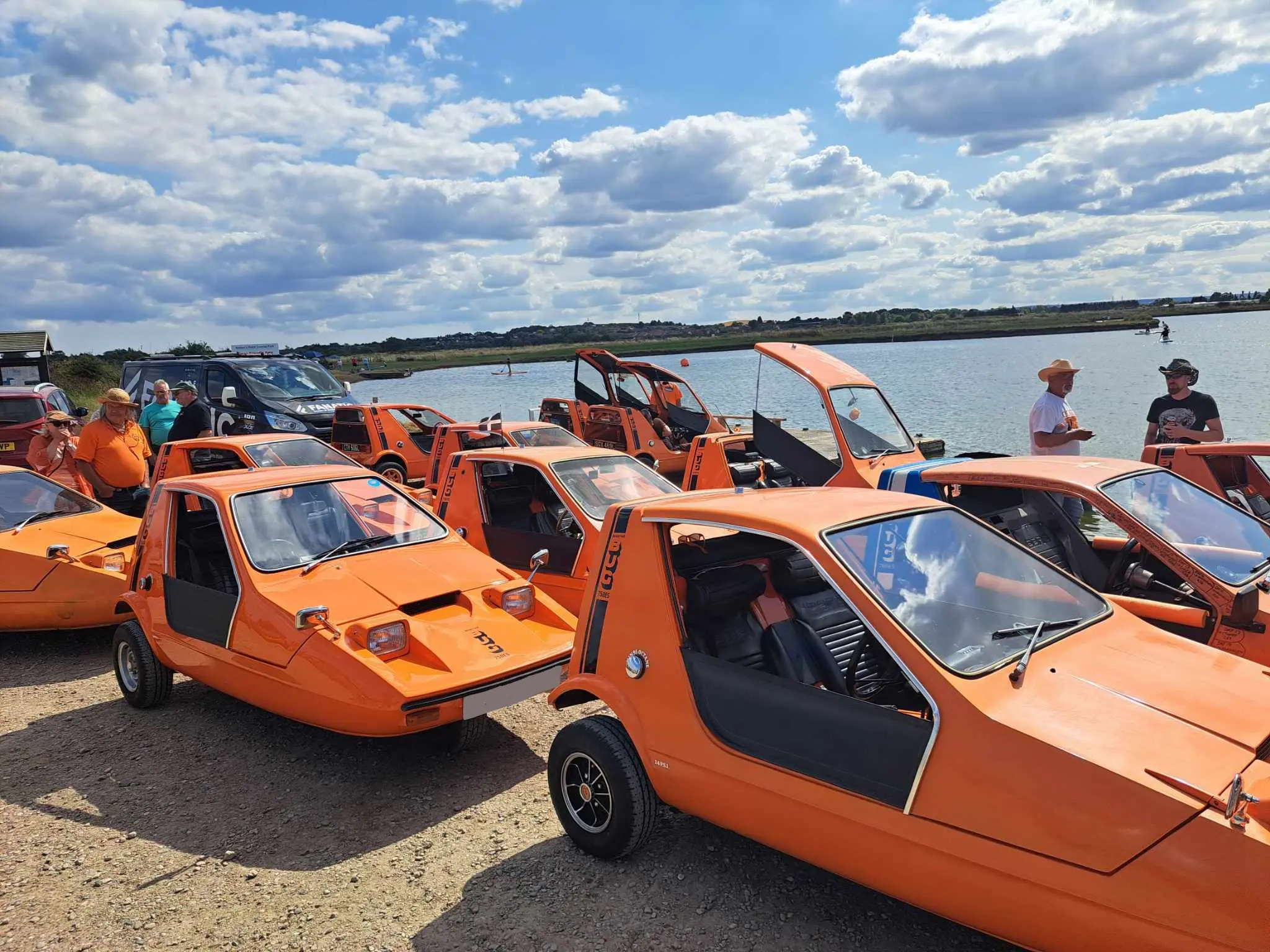
Indeed, not even the Ford Cortina Mk. III can evoke that lost world as much as the last ever Bond car. Nor is it a kitsch item to be ranked alongside repeats of Jason King, but it is a fascinating item of industrial design, on par with the Raleigh Chopper – another creation of Tom Karen.
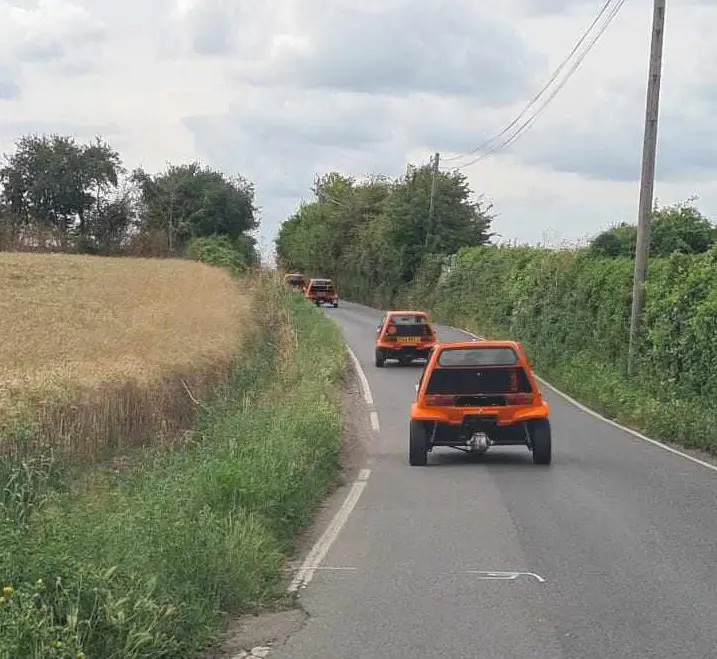
The Bug was originally to be a Reliant, and Karen of Ogle Design mooted the idea to the Tamworth firm’s management in 1967. His aim was a “sporty two-seater three-wheeler that applied top-of-the-range design values to a minimalist vehicle”, but Reliant was dubious about a product so different from their Regal 3/25.
However, Ogle created a mock-up in 1968, and in the following year, Reliant acquired Bond, their Preston-based rival, who was then suffering from falling sales of their Imp-engine 875, the three-wheeler. The MD Ray Riggins decided the Karen design would be sold as a Bond, with the launch at Woburn Abbey in June 1970.

According to Bond, the Bug was “that very rare thing – not just a new car but a completely new idea”. If the Regal was a resolutely sensible machine, the Bug was a “funabout” as opposed to a “runabout”. Nor was there the prospect of many 875 owners trading up to the latest Bond; as with the Reliant three-wheeler, it was a four-seated for the ‘family motorist’. By contrast, the Bug was an urban two-seater with overtones of Kings Road.
The specification featured the Regal’s 701cc light-alloy engine in that unmistakable lightweight GRP body. The seats were fixed, but Bond could supply pedal pads of assorted sizes for the driver. The original top speed exceeded 90mph, which was a concern for Reliant’s management, so the production models were capable of only 76mph.
Buyers had a choice of the 700 - the basic “simply-for-fun version” with a fixed canopy and no side screens. Bond referred it as suited for “fresh air fiends”, while the 700E boasted a heater, a sun visor, an interior lamp and those side screens, which Karen intended as “an easy escape route if the driver happened to roll the car”.
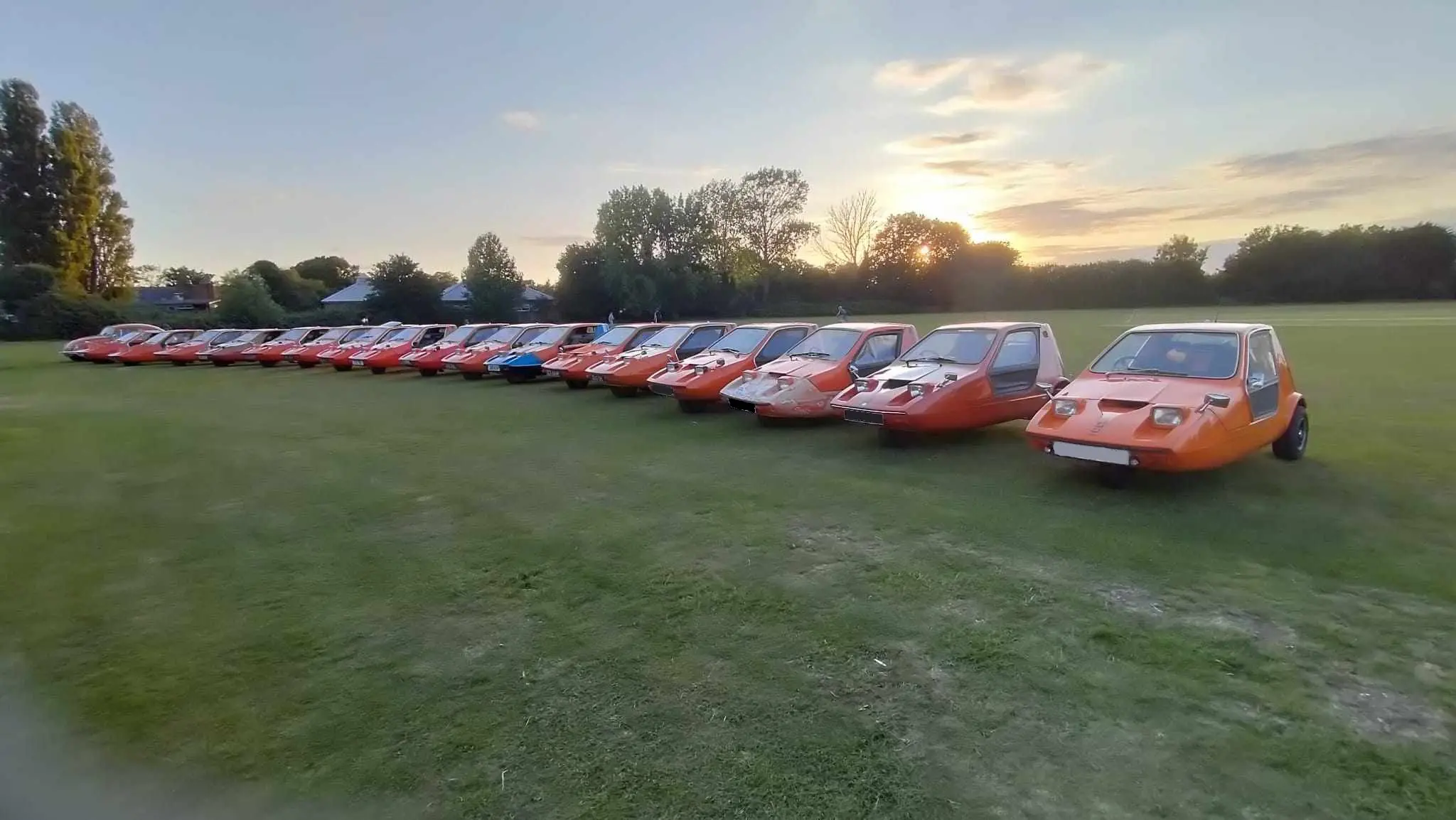
The most notable version was the 700ES flagship with low-profile tyres, “deeply quilted cockpit lining”, an ashtray, headrests, a “racing steering wheel”, and a “high compression engine”. The flagship Bond cost £628 19s 2d, including road tax and two years’ insurance, and many buyers paid another £12 10s for aluminium die-cast rear wheels. The exterior finish was “Any colour you like as long as it’s Tangerine” and the Bug aficionado Karl Russell says:
With the moulded seats, it is a very comfortable position. Tall or long-legged people may find it a squeeze, with the steering column support bar just about your knees. Remember that canopy when it shuts!! The Bug can get toasty with the side screens on as the engine is between the driver’s and passenger’s legs. The top section of the side screen is removable, this can make the drive feel even more sportier and fun. If you don't want to feel the wind in your hair just rest your elbow on the lower section to let in a gentle breeze.
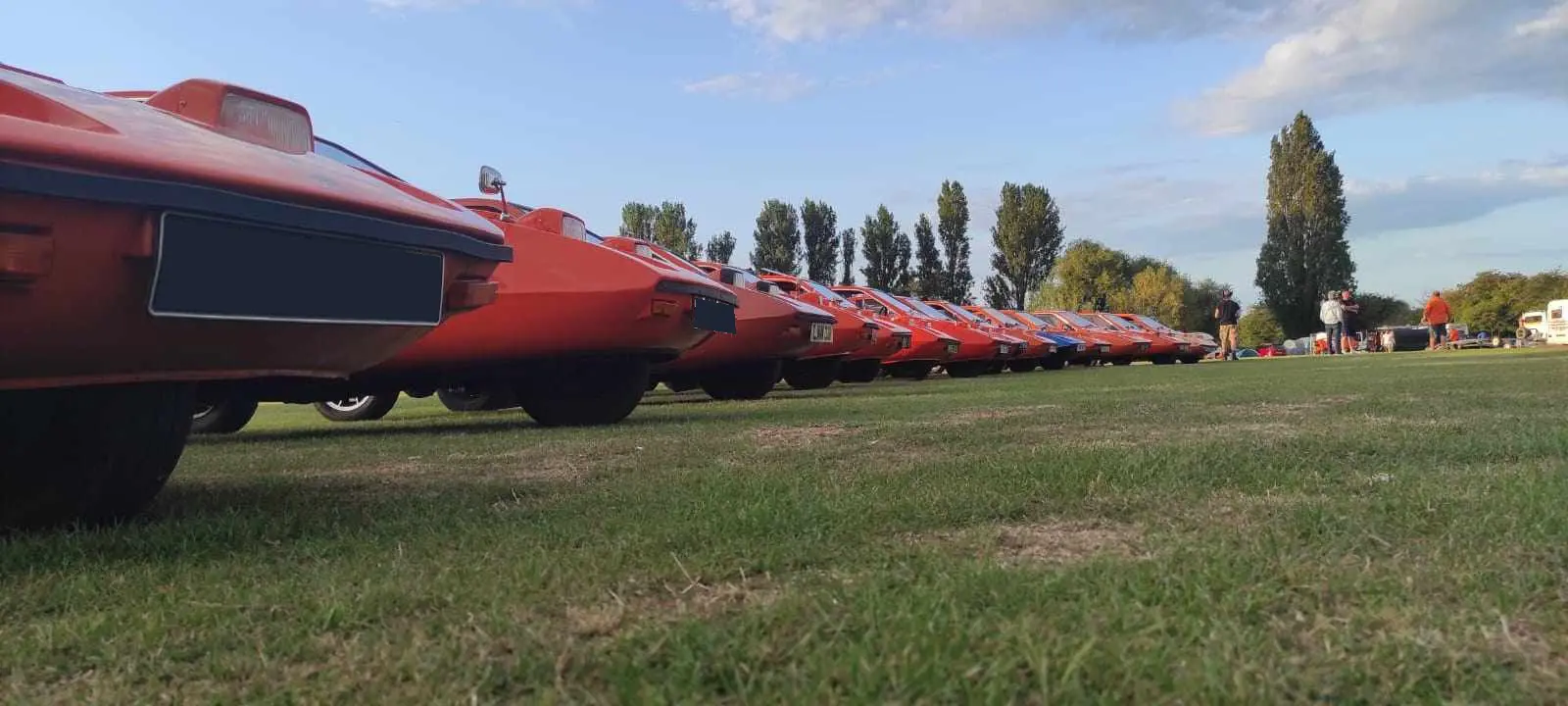
At the end of 1970, Reliant claimed that six out of ten Bug owners were aged 25 or under. The annual road tax was a mere £10, while one piece of advertising copy appeared to have been rejected dialogue from Carry On Loving: “There’s never been a car like it for pulling the birds.”
Despite such sales copy, when Motor tested the 700ES, they were sorry to have to return the Bug demonstrator to the factory. They thought, “bold steps forward deserve to succeed”. Autocar regarded it as “a completely new approach to the economy three wheeler and it is our prediction that it will become the Mustang of its class”.
Reliant attached two Bugs to a central section to create a four-wheeler for the 1970 London Motor Show, which did not display three-wheeled vehicles. A sign on their stand read, “Sorry, you can’t buy this Bug, but we’ll sell you half of it”. Tamworth’s keen eye for publicity also meant the Bond was the star prize on the ATV quiz show The Golden Shot and appeared in commercials for Cape Fruit. Rothmans cigarettes used a fleet of six white-liveried Bugs, registered AME191 H to AME196 H, for touring seaside resorts. Three are known to survive.
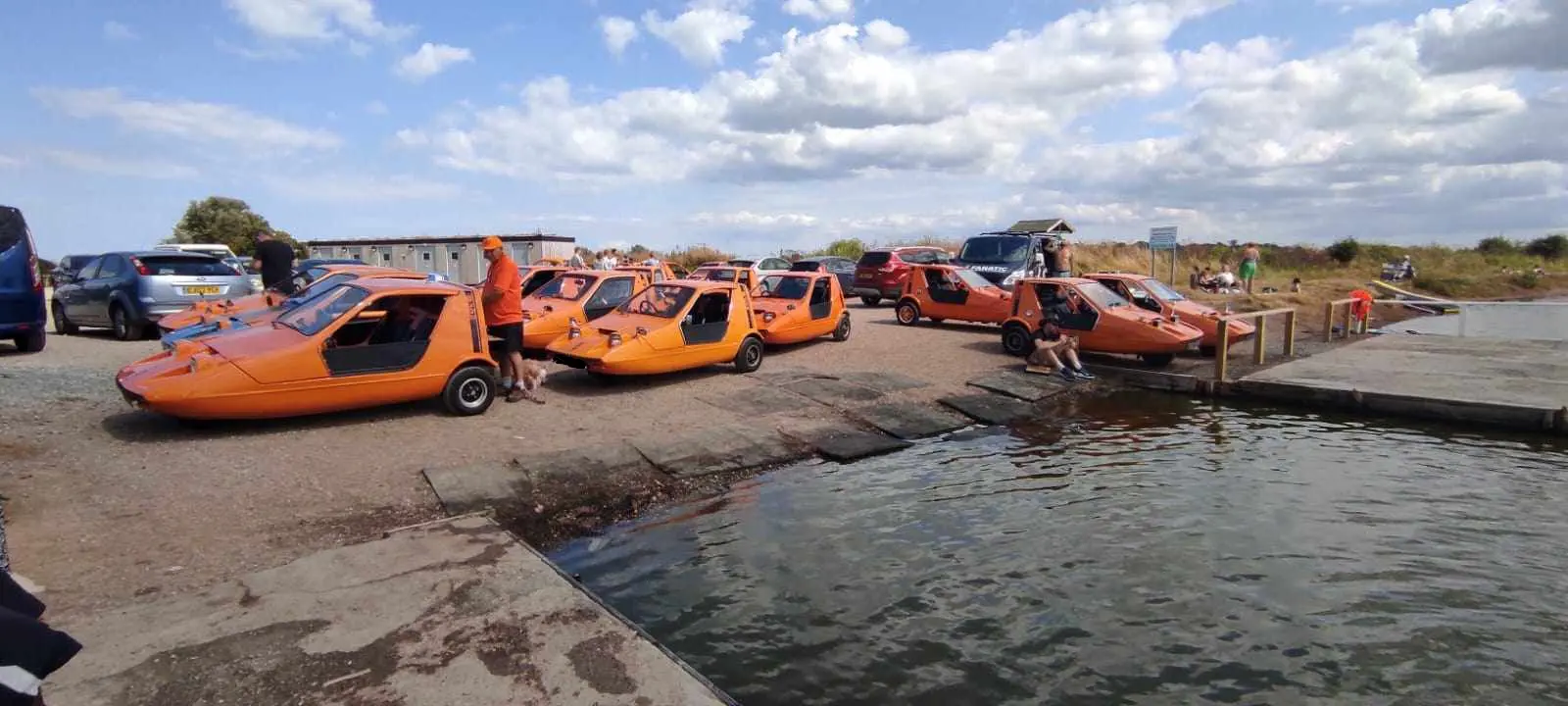
Production moved from Preston to Tamworth by the end of 1970, and the Bug gained a synchromesh gearbox in 1971. Two years later, the latest top-of-the-range 750ES featured the 748cc engine from the new Robin, but sales did not meet Reliant’s expectations. The Bug was undoubtedly innovative but expensive to build, and the insurance premiums were too high for its intended market. The original sales target was 2,000 units per year but the last of 2,270 Bugs left the factory in 1974, marking the demise of the Bond name.
Today, any display or rally of the Bug Club - https://www.bondbugs.co.uk/bugclub.php - is guaranteed to cause a minor sensation. Karl says:
The Bug Club hosts a main summer rally. However, throughout the summer season there are numerous events/rallies that the Bug Club attends, and not always a one car make rally. You will often find a Bond Minicar or Isetta in the same field. The Club gets about - Tamworth, New Forest, The Isle of Sheppey, Cheshire, and Glamis Castle in Scotland to name a few events we have attended this year so far!
As for the Bug’s enduring appeal, Karl thinks:
Over recent years I've heard plenty of new owners saying that they wanted one when they were younger but couldn't afford it or they had one when they first came out, but they had to sell due to the arrival of a child or two. The Bug does still have that ‘Wow!’ factor and it is more practical on the roads compared to some other micro cars especially with today's modern cars!
And wherever it goes, the Bug lives up to its slogan - "Something New Under The Sun".
With thanks to Karl Russell for his time and permission to use the images in this blog
